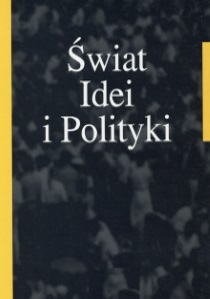Obecne zastosowanie zakazu dyskryminacji w decyzjach Sądu Konstytucyjnego Republiki Turcji
DOI:
https://doi.org/10.34767/SIIP.2019.18.19Słowa kluczowe:
prawa człowieka, zakaz dyskryminacji, zasada równości, turecki Trybunał Konstytucyjny, Artykuł 10 Konstytucji Turcji z 1982 r., Artykuł 14 Europejskiej Konwencji Praw CzłowiekaAbstrakt
Zakaz dyskryminacji i zasada równości są jednymi z najważniejszych elementów koncepcji praw człowieka. Współcześnie, odkąd liczba przypadków dyskryminacji w życiu codziennym zaczęła się zwiększać, kontrowersyjną stała się kwestia tego, w jakim stopniu prawo może chronić przed dyskryminacją jednostkę będącą rdzeniem społeczeństwa. W tureckiej konstytucji nie występuje zapis, który zabraniałby dyskryminacji. Jej przypadki rozpatrywane są w ramach zasady równości scharakteryzowanej w Artykule 10. Obszar badawczy tej pracy obejmuje prezentację tego, jak do zakazu dyskryminacji odnosi się turecki Trybunał Konstytucyjny oraz w jakim stopniu jego decyzje w tych przypadkach są podobne do wyroków Europejskiego Trybunału Praw Człowieka. Do przeprowadzenia analizy wykorzystano metodę historyczną i porównawczą.
Bibliografia
Abadan-Unat, N. (1981). Women in Turkish Society. Leiden: Brill.
Algan, B. (2001). Dissolution of Political Parties by the Constitutional Court in Turkey: An Everlasting Conflict between the Court and the Parliament. Ankara Üniversitesi Hukuk Fakültesi Dergisi,60(4), pp. 809–836 DOI: 10.1501/Hukfak_0000000001.
Arnardóttir, O.M. (2007). Non-discrimination under Article 14 ECHR: the Burden of Proof. Scandinavian Studies in Law 51, pp. 13–39.Retrieved from http://www.scandinavianlaw.se/pdf/51–1.pdf.
Aybay, R. (2017). İnsan Hakları Hukuku. İstanbul: İstanbul Bilgi Üniversitesi Yayınları.
Bâli, A. (2013). Courts and Constitutional Transition: Lessons from the Turkish Case. International Journal of Constitutional Law, 11(3), pp. 666–701. DOI:https://doi.org/10.1093/icon/mot025.
Baker, A. (2006). The Enjoyment of Rights and Freedoms: A New Conception of the “Ambit” under Article 14 ECHR. Modern Law Review, 69(5), pp. 714–737.DOI:10.1111/j.1468–2230.2006.00607.x.
Besson, S. (2012). Evolutions in Non-Discrimination Law within the ECHR and the ESC Systems: It Takes Two to Tango in the Council of Europe. American Journal of Comparative Law, 60(1), pp. 147–180. DOI:10.5131/ajcl.2011.0018.
De Schutter, O. (2005). The Prohibition of Discrimination under European Human Rights Relevance for EU Racial and Employment Directives. Luxembourg: European Comission.
Gerards, J.H. (2004). Intensity of Judicial Review in Equal Treatment Cases. Netherlands International Law Review, 51, pp. 135–183 DOI: 10.1017/S0165070X04001354.
Gönenç, L. (2006). Dynamics of Political Reform in Turkey. Europe-Koleg Hamburg.Institute for Integration Research. Discossion Paper 1/2006. Retrieved fromhttp://www.yasayananayasa.ankara.edu.tr/makaleler.html.
Göztepe, E. (1999). Anayasal Eşitlik İlkesi Açısından Evlilikte Kadınların Soyadı. Ankara Üniversitesi SBF Dergisi, 54(2), pp. 101–130.
Göztepe, E. (2011). Türkiye’de Anayasal Mahkemesi’ne Bireysel Başvuru Hakkının (Anayasa Şikâyeti) 6216 Sayılı Kanun Kapsamında Değerlendirilmesi. Türkiye Barolar Birliği Dergisi, 95, pp. 13–40.
Gözübüyük, Ş. & Gölcüklü F. (2016). Avrupa İnsan Hakları Sözleşmesi ve Uygulaması. Ankara: Turhan.
Inalcık, H. (1978). Impact of the Annales School on Ottoman Studies and New Findings [with Discussion].Fernand Braudel Center,1(3/4), pp. 69–99. Retrieved from http://www.jstor.org/stable/40240774.
Karan, U. (2013). Eşitlik İlkesi ve Ayrımcılık Yasağı. W:S. İnceoğlu (ed.), İnsan Hakları Sözleşmesi ve Anayasa Mahkemesi’ne Bireysel Başvuru Kapsamında Bir İnceleme (459–494). İstanbul: BETA.
Karpat, K. (2001). The Politicization of Islam: Reconstructing Identity, State Faith and Community in the Late Ottoman State. Oxford: Oxford University Press.
Kontacı, E. (2014). Anayasa Mahkemesine Bireysel Başvuruda Avrupa İnsan Hakları Sözleşmesi’nin Yorumu. Ankara Barosu Dergisi, 4, pp. 106–117.
Mardin, Ş. (2000). The Genesis of Young Otoman Thought a Study in the Modernization of Turkish Political Ideas. Newyork: Syracuse University Press.
O’Connell, R. (2009). Cinderella comes to the Ball: Article 14 and the right to nondiscrimination in the ECHR. Legal Studies:The Journal of the Society of Legal Scholars, 29 (2), pp. 211–229.
Oğuzman, K. (2014). Evlilik Dışı Çocukların Babalarına Mirasçılığı Sorunu. Ankara Üniversitesi SBF Dergisi,49, pp. 303–411. Retrieved from http://dergipark.gov.tr/download/article-file/36529.
Oostland, R. (2006). Non-discrimination and Equality of Women A Comparative Analysis of the Interpretation by the UN Human Rights Committee and the UN Committee on the Elimination of Discrimination Against Women. PhD. Utrecht University. Utrecht.
Özbudun, E. (2006). Political Origins of the Turkish Constitutional Court and the Problem of the Democratic Legitimacy. European Public Law, 12(2), pp. 213–223.
Tobler, C. (2014). Equality and Non-Discrimination under the ECHR and EU law a Comparison focusing on discrimination against LBGTI persons. Zeitschrift für ausländisches öffentliches Recht und Völkerrecht, 74 (3). pp. 521–561. Retrieved from https://www.zaoerv.de/74_2014/74_2014_3_a_521_562.pdf.
Üçok, C., Mumcu A. & Bozkurt G. (2008). Türk Hukuk Tarihi. Ankara: Turhan.
Yüceer, S. (2008). Demokrasi yolunda önemli bir aşama: Türk kadınına siyasal haklarının tanınması. Uludağ Üniversitesi Fen-Edebiyat Fakültesi Sosyal Bilimler Dergisi, 9(14), pp. 131–151.

